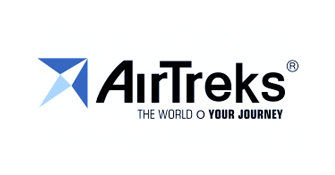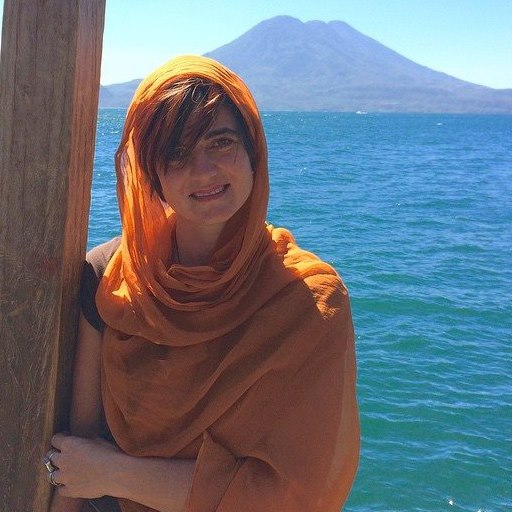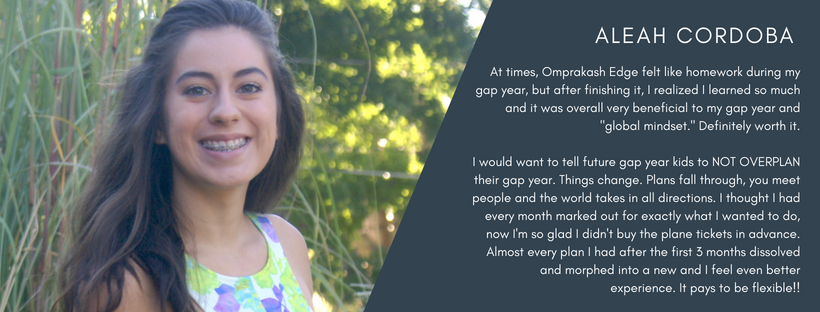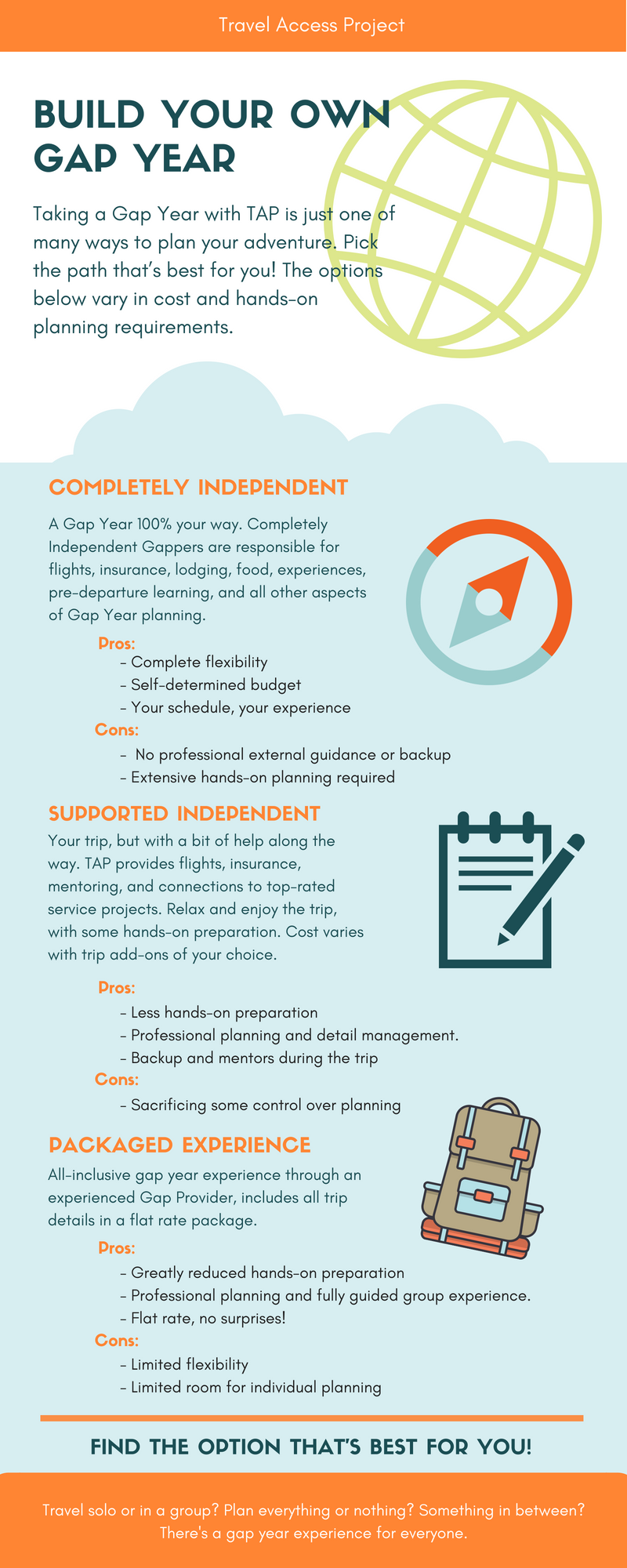Take a Gap Year to
Ecuador
Of course the Galapagos jumps to mind when you think of Ecuador: clear blue waters, secluded islands, and the opportunity to see wildlife that is protected and exists nowhere else in the world. But there is so much more to Ecuador than the Galapagos.
Imagine yourself wandering the colourful streets of Quito, a feast for the senses in sounds, smells, and sights. Get lost in Otavalo market. Or hiking El Cajas National Park, with more than 275 Andean lakes and so many waterfalls, it feels like a world away. Learn to kite surf, go white water rafting, visit Laguna Quilotoa, or explore the Mindo cloud forest.
What if you could combine that adventure with skill building and service through teaching, or community development projects? Expanding your worldview and your experience through engagement with another culture that challenges your status quo?
Spend a semester, or a whole school year, learning and living your wildest dreams in Ecuador.
TAP provides everything you need to get started. Talk to a travel mentor about your trip.
Or, make a $500 deposit and start planning now!
Ethical Service Learning – Learn skills too
Through an accredited a network of vetted service-learning opportunities that are ethically sound, we’ll help you find a place to serve and grow from 10 unique opportunities in Ecuador. Use your skills, from general volunteer work, farm help, English teaching, health promotion, eco-tourism & conservation, teaching music, arts or construction apprenticeship, and much more to give back while you learn forward.
We also provide unique pre-departure support and training for each TAP Gapper, including trip planning support, individual mentorship with a TAP Guide, and a deep dive into the experience and ethics of international travel and service learning so that you’re ready to face the world.
Flights
AirTreks is the industry leader in round the world flights, with over thirty years experience getting people where they want to go. Through our partnership with AirTreks, you’ll have a designated travel agent, a real person, who will make sure you get the best flight possible, and the flight costs are included. No matter where you’re coming from.
Food & Lodging
Many of the service learning opportunities we’ll point you towards provide food and lodging for their volunteers. Where they do not, support in finding local lodging is provided and a budget for food and incidentals is outlined. The cost for this will vary and we’ll help you keep it within the budget outlined.
This cost has been factored into the cost of your TAP Gap.
Food and lodging for your arrival and departure in Ecuador, not at your project, and food or lodging for any excursions you choose to take during your Gap Year are extra, and you’ll need to budget for those.
Travel Insurance
We believe staying safe on your Gap Year should be a primary concern. Travel insurance is an essential part of that. Included in your TAP Gap is full coverage travel insurance that includes emergency care, basic healthcare, transportation of a family member to Peru in case of a serious emergency, and emergency evacuation. Of course the basics of travel insurance, covering your trip and your bags are included too.
Partnered With:

Cultural Opportunities
Our trip to Ecuador offers dozens of incredible cultural opportunities. Perhaps you’ll be interested in diving deeper and learning about:
History
The history of Ecuador is divided into five periods: Pre-Columbian, Conquest, Colonial Period, War of Independence, Gran Colombia and Simon Bolivar. Study the different periods and compare and contrast. In addition, visit the Old Town section of Quito and notice the Spanish and Inca influence. Why is there very little Inca influence?
Be sure to consider and investigate the following:
- Incan Empire and its fall
- The first revolt against Spain
- Independence
- Dictatorship
- Democracy
- Gold
- Trading routes
- Women in battle
Indigenous Groups
Identify the different indigenous groups in Ecuador. Once you have completed your research take a field trip to several of the communities to see how they operate their daily life.
Prepare a multi-media project with photos, video and text that outlines your discoveries.
- How long have they been around?
- Are they dying out or is the group growing?
- Where are they located?
- What are the visual elements of their dress that separates them from other groups?
- What are their life philosophies?
- What ceremonies are of importance in their group?
- How are the economic conditions? What are the challenges and advantages?
Language
Examine the linguistic landscape of Ecuador. Spanish is the official language, but there are others. Study the ways in which this rich heritage of language has build the country and ways in which it holds it back. What is being done, on the one hand, to preserve this cultural heritage, and on the other hand to build the country forward through language?
Geological Formations
Equador is loaded with volcanos. Identify the main volcanoes of Ecuador and how they came to be?
Are there advantages and disadvantages to having so many volcanoes in close range of each other?
Which volcano is the tallest in the world? And what parameters make it taller than Mount Everest?
Hike to Pichincha, Cotopaxi, inside Quilotoa or any other volcano of your choosing. How do they differ? Why? What did you notice about the terrain?
Galapagos
Darwin became famous for his discoveries related to the science of evolution, which mostly took place in the magnificent Galapagos islands. Although it is expensive to visit the area if the opportunity arise be sure to seize it. Take time to study the following in Galapagos:
- The birds, particularly the Frigates, Blue Footed Boobies and the Finches.
- The history of the islands and the mysteries surrounding them.
- The volcanoes, the lava and the impact it has had on the islands.
- Sea lions, Iguanas (land and marine), sharks, crabs, sea turtles, tortoises.
- How are each of these impacted by the weather conditions?
- Are they native to the area? What do they eat?
Geodesic Missions & The Equator
There were three geodesic missions in Ecuador with the first one starting in 1735. Research each mission and identify its discoveries, how they vary, how the measurements were done/tools used, who were the key players and why these missions were crucial. Also, take time to visit the following and share what you have learned in an essay.
- The Equator
- The Intinan Solar Museum
Economics: Investigate an Industry
Suggestions include but are not limited to:
- Oil
- Bananas
- Shrimp
- Fish
- Coffee
- Textiles
- Coca Leaf
Cover the process, exports, industry standards, human impact, community impact, working conditions, the influence of unions, or organizations for fair trade or other regulatory bodies. How does this industry contribute to Ecuador’s growth and economy?
Medicinal Plants
Spend a day with an indigenous farmer to understand the medicinal uses of plants and flowers within their community. Also, learn about the spiritual enlightenment, ceremonies and cleansing that is performed on community members to remove negative energy, improve health and free the spirit.
Take part in a negative energy removal ceremony. Did you feel different? Do you believe these practices work? Have you done anything like this before?
Enjoy an organic meal with your host. Did you feel more energized eating chemical free? Was the food tasty?
What was your favorite medicinal plant and why? Were the medicinal plants in a sacred forest or did you find them elsewhere? Do you believe in the power of medicinal plants? Why or why not?
Take your experience one step further by reading information online or in a book about areas that were of particular interest to you.
Wildlife Conservation
Ecuador is home to the Galapagos, which is full of rare and endangered species of birds, fish and animals. The highlands of Ecuador and the Amazon also contained threatened habitats containing at risk populations. Whales, bears, monkeys, rats, seals, bats, tapir, armadillo, otters and more are on the list of threatened species in Ecuador. Study one or more of the endangered animals. Visit the habitat of this animal and try to see it in the wild. Are there any conservation efforts underway? Describe them. How effective have they been? Consider producing an article or a video to expose more people to the plight of this animal and why it’s important to support conservation efforts. Consider volunteering your time or resources to make a difference.
Post-Quake Reconstruction
In April of 2016 a major earthquake, 7.8 on the Richter Scale, rocked Ecuador. Hundreds died and the devastation to infrastructure was significant. Study some aspect of the quake and it’s aftermath. Investigate the field of seismology and earthquake predictions in Ecuador. Examine the frequency and effect of quakes on the region as part of the infamous ring of fire. Interview survivors and relief aid workers, or those involved in the continuing reconstruction. What was it like to live through the quake? What could have been done differently to prevent damage or speed recovery? What are the on going challenges that individual communities and the country at large face moving forward?
Zika Virus
In the three months since the April 2016 earthquake the incidence of Zika virus increased twelvefold. Zika is a significant health crisis in Ecuador and many other countries in the region. Study Zika. Where did it come from? What causes it? What are the effects long term on infected persons and their children? How is it transmitted? What is being done to stem transmission? How are you, personally, protecting yourself? Interview healthcare providers and local people about the virus and it’s impact in the areas you are traveling through.
Teen Pregnancy
22% of girls are married before the age of 18. However, this practice is completely legal, as the law allows marriage for girls over 12 years old, and boys over 14.
In the past few years, there has been an increase in the number of mothers giving birth between the ages of 15 and 19 years old. These teenagers fall victim to sociocultural clichés, given that their role in society is limited to reproduction and domestic chores.
On the other hand, Ecuador also has a high percentage of girls pregnant between the ages of 10 and 14. This is explained by the custom of families entrusting their girls to richer families or people, without any agreement or negotiations to ensure food and housing security.
Why do you think their has been an increase in pregnancies? Explain in detail. How would you attempt to solve this problem? Are there other solutions in place? What kind of results are they showing? Have the numbers surrounding sexually transmitted diseases increased? Has the country done anything to protect these children having sex? How does the pregnancy rate compare and contrast to other developing countries?
Malnutrition
Chronic malnutrition is one of the biggest problems authorities are now confronting. In fact, the numbers remain alarming despite efforts taken to reduce poverty and programs with the aim of improving the levels of instruction and hygiene for mothers.
There are regions, in particular rural areas, where over 50% of the children and adolescents live in poor households, without access to potable water, sanitation or health care facilities. Around 35% of Ecuadorians living in rural areas live in overcrowded houses.
Examine the social and economic effects of malnutrition on the country and present a possible solution, OR examine the solutions already on the ground and find a way to support them. This would not only be an academic project, but a social action project as well.
Make a $500 deposit and start planning now!
Get Ahead With a Gap Year
Did you know that Gap Year students return to university at a rate of 91% and do measurably better than their peers who don’t take a Gap Year? Did you know that Gap Year alumni report higher job satisfaction, higher levels of civic engagement, and that for most students their gap year has a direct impact on their career choice? Did you know that students who have taken a Gap Year actually get through college faster, on average, than their non-gap peers? They do.
We believe taking a well planned Gap Year is an essential part of a well rounded education and the evidence that it benefits students, not only as they embark on higher education but in all areas of life, is abundantly clear.
Read more about the research in the National Alumni Survey done by the Gap Year Association.
Pre-Departure Preparation
Perhaps this Gap Year is the first time you’ll travel alone. The first time you’ll live in another country. The first time you’ll be responsible for your own food and lodging, budget and life planning. You want to make a difference in the world, but you want to do it well. Perhaps your family and friends are concerned that you’re not ready, or that there is too much to be afraid of.
TAP students receive a free student membership to GYA. Our pre-departure support is designed to get you ready. From help with your planning, to individualized mentorship with a TAP Guide, we’ll be with you every step of the way.
We’ve helped over 100,000 people take round the world trips over the past 25 years. We’ll help you too. We’ve taken our own Gap Years, and so have our children. We understand what it feels like, and we have overcome the same fears.
Who This is For:
So, who should take a TAP Gap Year? We think everyone can benefit from a Gap Year, regardless of where you are at in life. Most people who take a Gap Year do so between high school and college, or after university graduation and before their career starts. But that’s not the only good time. Lots of people take a mid-career Gap Year or a family Gap Year later in life. TAP Gap Years are for everyone.
You should consider taking a TAP Gap Year if:
- You recognize that travel is an essential part of education
- You have a spirit of adventure
- You have a desire to serve and give back in the world
- You are an independent sort of traveler
- You are confident in your ability to “go it on your own”
- You are serious about learning on your Gap Year
- You are budget conscious and want to get the most bang for your buck
- You’d like a little bit of help with the planning
- You’re looking for the security of a travel company with years of experience
- You recognize the value of a mentor in learning and travel
- You’re willing to take responsibility for your own journey
In short, TAP Gap Years are for intrepid and adventurous travelers who could benefit from the experience and support of an experienced team.
Get Started:
Apply to TAP Gap now
- Get connected with your TAP Guide
- Identify your service learning opportunity
- Plan your flights with your AirTreks travel agent
- Complete your pre-departure study and planning
- Go!
Ready for the adventure of a lifetime?
Who This is NOT For:
There are lots of ways to take a Gap Year and we don’t think ours is the best way for everyone.
It’s certainly not the only way.
Some people aren’t ready to travel on their own.
Some people need the safety net of a well planned group trip and some extra support to build the skills they need to travel safely and well on their own.
Not everyone WANTS to take on the burden of doing the planning for themselves. Some people will find a group experience more satisfying than a solo venture. There are a lot of reasons you should NOT choose a TAP Gap Year.
A TAP Gap Year probably isn’t for you if:
- You really enjoy group travel more than being on your own
- You’ve never spent a night away from home
- You want a guide on your trip with you
- You aren’t interested in budget travel
- You don’t want to work or serve at all on your Gap Year
- You aren’t interested in learning before and during your Gap Year
- You are looking for resort style living
- You want to do all of the planning, every single bit, yourself
- You want to get college credit on your Gap Year
- You question if you are mature enough to take responsibility for yourself
In short, you should not take a TAP Gap Year if you are looking for a group experience or are not comfortable with the idea of traveling independently.
If you want to have a great group experience on your Gap Year and are looking for a reputable program to join, we highly recommend that you start looking at the Gap Year Association. They have a list of reputable and accredited Gap Year programs around the world, some of which even offer college credit.
Who Are We?
Hi, we’re Sean and Jenn… or Jenn and Sean… we are co-founders of the Travel Access Project, avid travelers, active learners, enthusiastic educators, once upon a time student travelers, and parents.

Sean Keener:
Sean is the Chairman of BootsnAll and AirTreks, two of the most trusted brands in the independent travel marketplace.
BootsnAll is one of the longest standing independent travel sites and through that portal Sean has been helping people take long term trips for over twenty years. Well over 1,000,000 people have taken journeys of a lifetime through the BootsnAll network.
AirTreks is the largest purveyor of round the world airline tickets. They specialize in helping people take complicated trips. Their experienced travel agents will help you get the best deals on flights and the perfect itineraries nailed down for your Gap Year. They know their stuff.
Sean attended the GAP Year Conference in 2017 and was happy to see the quality of all the GAP years provided their, but disappointed at the high price and in accessibility of them.
Sean hopes that $5000 for a Semester and $10,000 for a year all inclusive will allow more folks to experience the life transforming effects and learnings of a GAP year experience.

Jennifer Sutherland-Miller:
Jenn was inspired to create the Travel Access Project with Sean as a result of her life traveling. She was almost born in Guatemala, spent her childhood across the three major countries of North America, took her first solo trip to Europe at 16 and spent a full decade traveling full time with her four children for the purpose of their educations. She believes travel is essential to a well rounded education and she wants to make that happen for every person, not just her own kids.
Jenn has lead learning journeys for groups of girls and women, building the skill set necessary for safe solo travel as women. She has spent years mentoring young adults who want blend travel and education and has launched three of her own children to significant solo and Gap Year travel. She knows what it feels like to be the parent, launching a kidult into big time travel, alone. Having spent more than a decade working with families at the intersection of education and adventure, she’s uniquely qualified to help young people meet the world, and parents successfully hand off the reins.

TAP Guides
All of our TAP Guides are experienced travelers who have taken Gap Year type trips and worked in the industry for many years. Many of them are also educators, and parents. These are people who are handpicked for their wisdom, and real-world experience; not only in travel, but in working with young people in travel.
Through the EdGE classroom you’ll communicate with your mentor about your trip plans, as well as what you are learning. We will be there every step of the way to make sure that you’ve dotted all the i’s and crossed all the t’s, so that you are well prepared to face the adventure ahead of you.
With the TAP Guides, you can rest assured that you are in good hands.
Testimonials



Which path to a Gap Year will you take?

